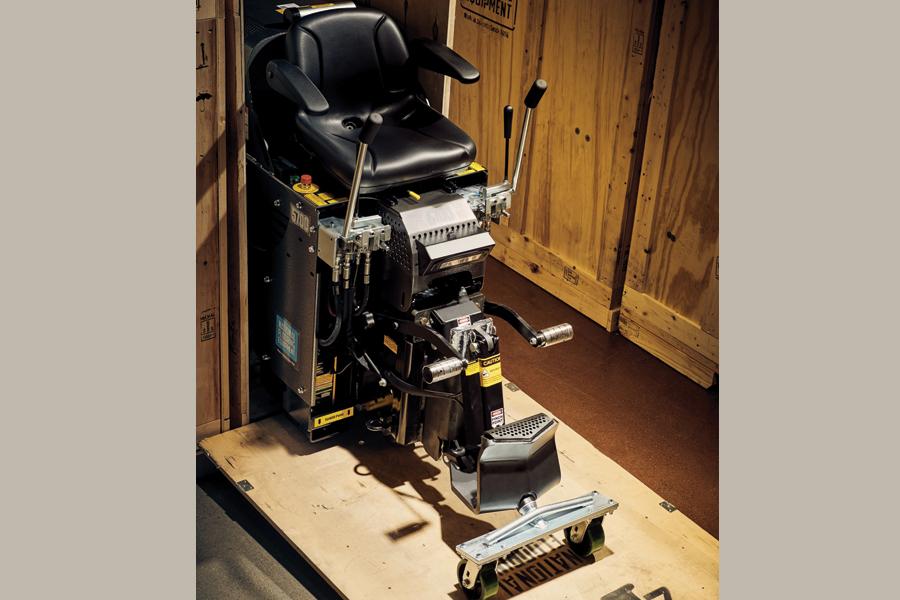Geoff answers some common questions about loading and maintaining equipment in the flooring industry.
AS Emmert Wolf said, a man is only as good as his tools, so operators and rental companies should focus on maintaining their machinery to make them as effective as possible. With some replacement parts costing thousands, extending the lifespan of each part in a surface removal machine is key to reducing downtime, costs and increasing productivity.
To remain efficient and cost effective, operators must remember to protect their machines during the floor removal process to reduce damages and help extend the lifespan of each machine component. A lack of care with machinery could create health and safety risks to the operator and rapidly decrease the lifespan of parts. Here are some of the main ways to protect your machinery.
How do I safely transport a walk-behind scraper?
During loading and unloading, operators risk slamming a walk-behind into the floor as it moves up a ramp, which can drastically shorten the lifespan of the machine. Contractors should always attach and use transport wheels when manoeuvring walk-behind scrapers to limit damage and remove them while in transit to limit additional movement when in a vehicle.
Operators can load the machines in different ways depending on what’s available. For example, if there is an electrical outlet, operators can simply drive the machine up a ramp and onto the trailer. If electricity is not available, take the drive pins off the wheels to allow free movement, check the tilt is up and use a winch cable to pull it onto the vehicle. Check local laws when securing the machine to ensure it meets regulation, but we also recommend using a chain to tie the machine down to stop it getting damaged during transportation.
How do I unload and reload a ride-on scraper?
When the transport wheels are attached flat to a ride-on scraper, the machine will tilt back a little to stop the wheels spinning around as it moves, altering the centre of gravity. Operators should always back ride-ons into the trailer, so the centre of gravity is more stable and safer as the machine is unloaded.
The weight and size of the ride-on machines can be a risk to the operator, so we recommend that any operator wears personal protective equipment when using the machinery, like steel toe shoes, to protect them from any accidents. The weight also needs to be taken into consideration when choosing a trailer to use. The weight of some machinery could easily damage a trailer if not properly reinforced, costing businesses large sums to replace damaged equipment.
How regularly should I maintain my machinery?
The lifespan of components is heavily reliant on how regularly you use the machinery. If there’s an accident, we do see new machines needing repair work. More commonly, if a machine is rented out, it can be five or six years before parts need maintaining or replacing. If the machine is owner operated, some will never need replacements and other we will see ten years after purchase for battery replacements or new chargers.
National Flooring Equipment has surface preparation experts around the globe who are always available for after sale support on any surface preparation issue, from choosing the right machine to effective transportation.
www.nationalequipmentdirect.com
Geoff Putz, vice president of manufacturing at surface preparation expert, National Flooring Equipment


